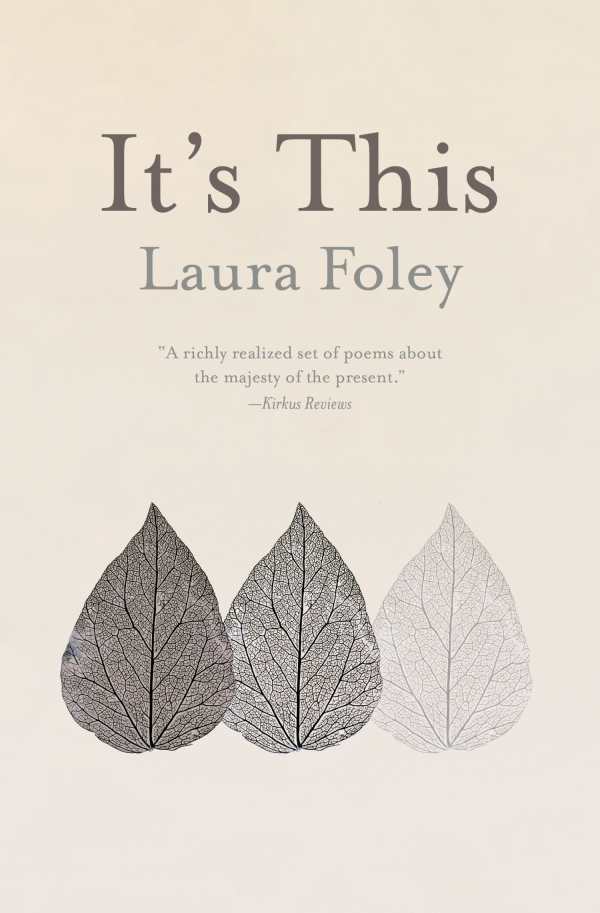It's This
Restrained, vibrant language and delightful surprises abound in the spiritual, loving poems collected in It’s This.
Laura Foley’s poetry collection It’s This spins webs between nature, human love, and spiritual connections.
These sixty-one accessible poems cover precise, ordinary happenings with hints of a more expansive inner and outer universe. Many of the poems take place in the present, moving from observation to recognition and then celebration or appreciation. Those that look back at the past do so with a gentle acceptance of mistakes.
Written in free verse, with very little in the way of sound work, the poems rely on juxtapositions, line breaks, and unexpected phrases to achieve their emphasis and surprise. In “Radiance,” all three techniques come together to say more than the words say by themselves. The poem begins with “I remember when I stopped / not believing in God,” reversing a more typical human revelation of losing belief. Here, the negative phrasing upends that expectation, and the line break between “not” and “stopped” emphasizes the stopping itself, directing attention to the unusual phrase, “stopped not believing.” The bit of narrative juxtaposed in the poem also upends expectations; the speaker lets go of nonbelief, embraces God, and begins the end of her marriage to her husband.
Some poems take clear delight in flipping heteronormative scripts with wordplay. “Debut and Finale” begins by describing a photography session where the speaker is portrayed as overexposed and objectified. Reflecting on this treatment, she transitions to appreciation of her wife, who “cherishes me / at my most exposed.” Still, though human love is a recurring theme throughout, spiritual questions form the backbone of the collection. These include the question of what is worthy of prayer, as in “For Thirty-Three Points,” in which a Scrabble player beseeches God for a particular letter and then regrets it as “a wasted supplication.”
Images are drawn from the natural world and often used with restraint, but they still make landscapes visible. From a hill, the speaker sees how “grass accepts the wind’s direction” and later observes “poplar trees’ silver shimmering in the wind.” Images often traverse an entire poem to create a sense of unity, as in “Shadows and Light,” where the gesture of cupping transmutes from a stone cupping a puddle to a bra cupping a breast to a lake, which becomes “an eye / gazing at me” as the speaker awaits a radiology diagnosis.
With its references to photography, radiology, and less technical acts of framing observations, the collection embraces a desire to pin life as it exists in a particular moment to something permanent. That desire, as human as it is, can be fatal. Some poems reveal this in disturbing images of monarch butterflies, captured to fulfill human ideas of what’s in their best interests, that end up dead. In these poems and a few others, the collection’s quiet language seems to shrink from deeper analysis and responsibility.
It’s This uses attentive language to assemble a healing collection of poems.
Reviewed by
Michele Sharpe
Disclosure: This article is not an endorsement, but a review. The publisher of this book provided free copies of the book and paid a small fee to have their book reviewed by a professional reviewer. Foreword Reviews and Clarion Reviews make no guarantee that the publisher will receive a positive review. Foreword Magazine, Inc. is disclosing this in accordance with the Federal Trade Commission’s 16 CFR, Part 255.

